

| 銅板葺 | doubanbuki | copper/bronze roof |
| 桧皮葺 | hiwadabuki | cypres bark roof |
| 瓦葺 | kawarabuki | tiled roof |
| 杮葺 | kokerabuki | shingled roof |
| 草葺 | kusabuki | thatched roof |
| 大和葺 | yamatobuki | yamato roof |

| Note 1 | The secondary roof at the end of the hut. We will construct one of thse using the lap board design previously discussed. This secondary roof should be hinged in such a way that it folds down over the end wall during storage. This emulates Heian period shutters. A detachable secondary roof is an alternative to this approach. |
| Note 2 | The skirting beneath foor level. If possible, I would like to emulate this type of skirting at least on the eight foot ends which donot have wheel wells do deal with. |
| Note 3 | The plaster color in this pictureis typical of tea huts. We should try to emulate it. |


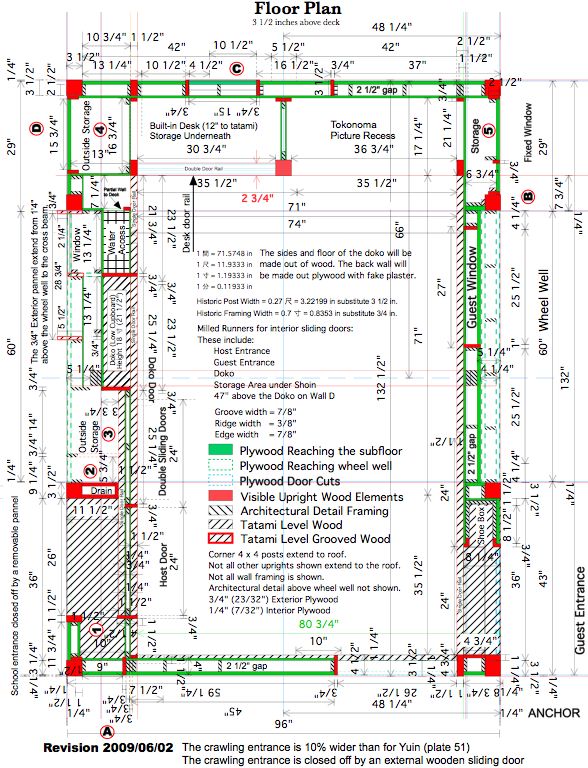
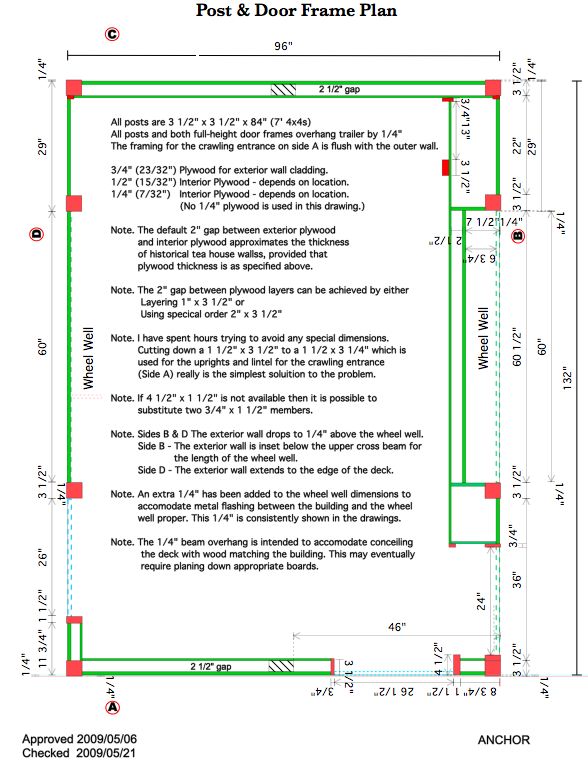
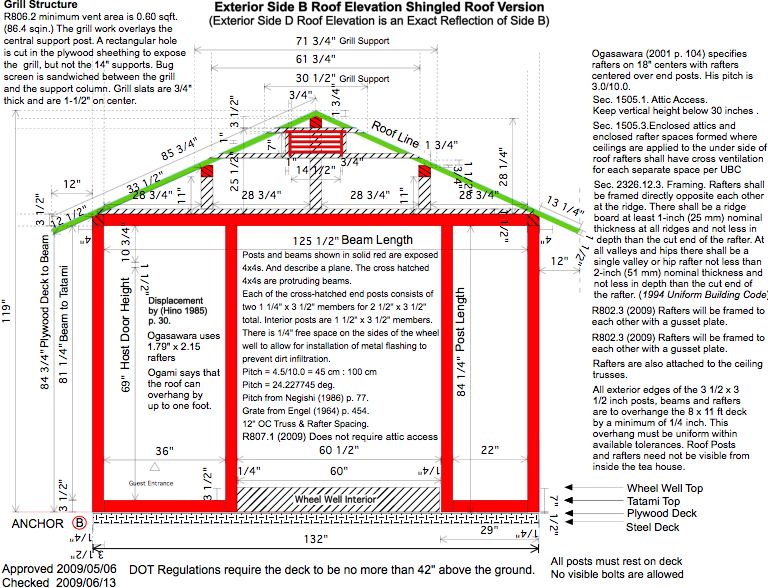
| Note 4 | It should be possible to lay secondary ridge beams to either side of the primary ridge beam. These would have to be 1 1/4 x 4 stock milled to approximately 3 x 1. |

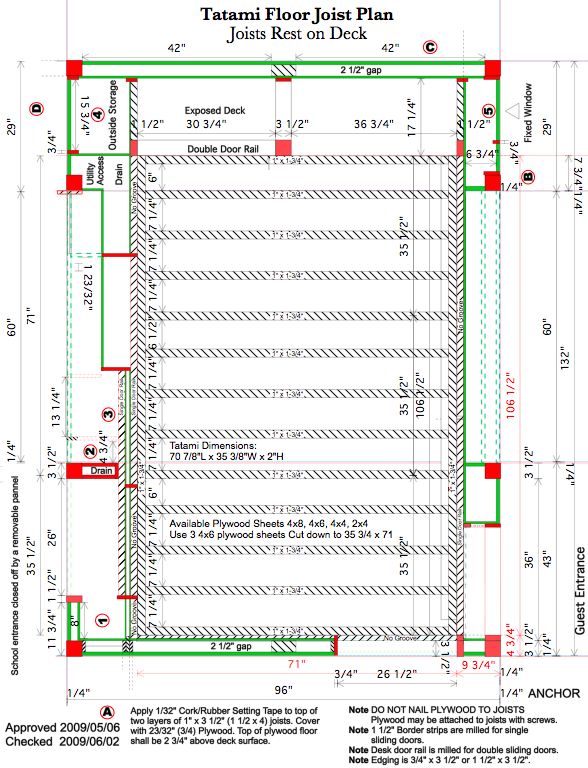
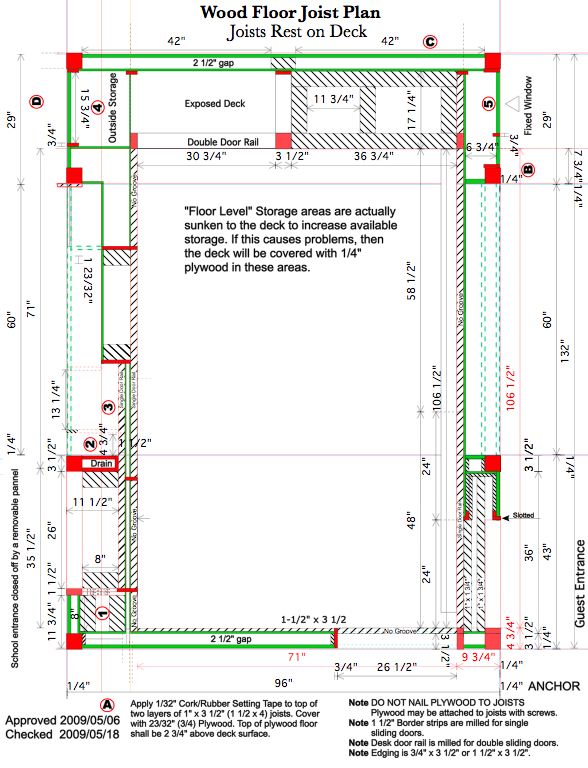





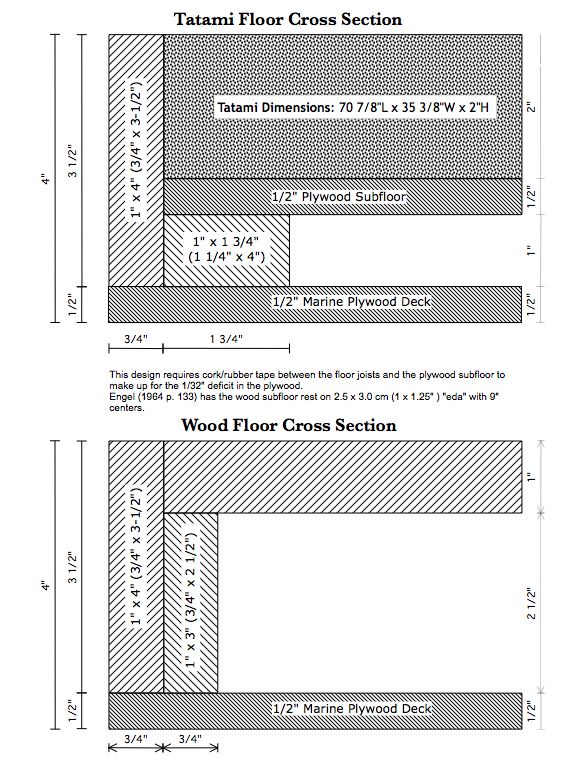

Dupont Stucco Wrap will provide a wall surface which can be painted or stuccoed without the plywood texture showing through. Du Pont recommends using Stucco Wrap as part of a two layer system for exterior walls in severe weather environments.
